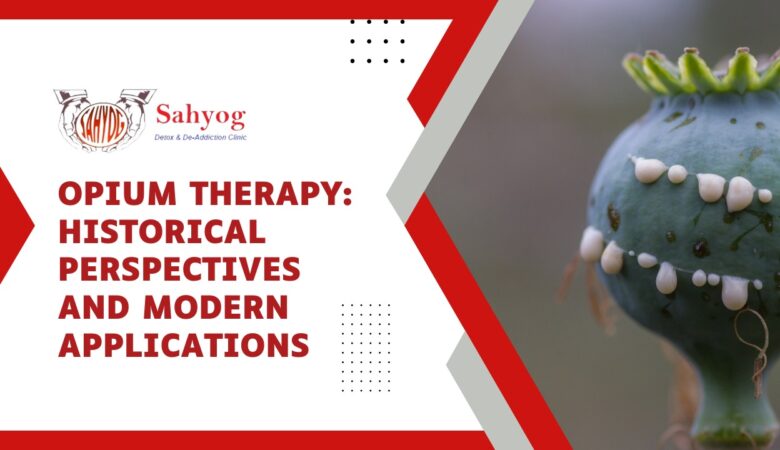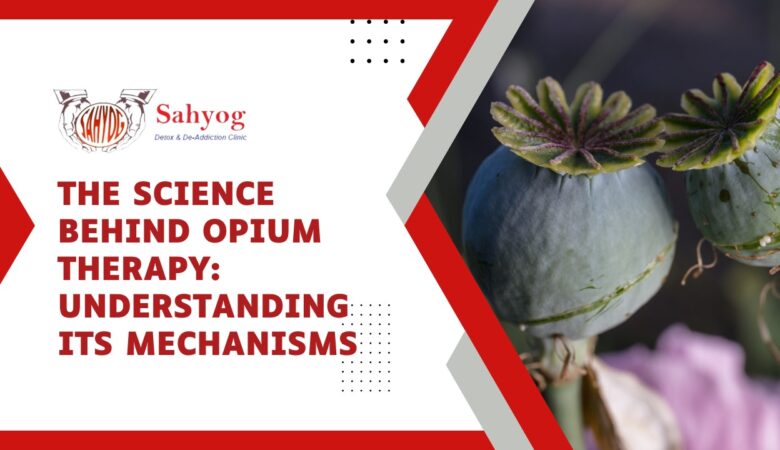Opium Therapy: Historical Perspectives and Modern Applications
Introduction to Opium Therapy Welcome to a journey through time and medicine as we explore the fascinating world of Opium Therapy. From ancient civilizations to modern practices, opium has played a significant role in pain management and cultural traditions. Join us as we delve into the historical perspectives and modern applications of this controversial yet powerful substance. Let’s uncover the benefits, risks, and controversies surrounding opium therapy while considering alternative options for pain relief. Get ready to discover the past, present, and future of opium therapy in this insightful blog post! The History of Opium Use in Medicine Opium has a rich history of being used in medicine for centuries. Its origins can be traced back to ancient civilizations like the Sumerians and Egyptians, who valued its analgesic properties. In traditional Chinese medicine, opium was utilized as a remedy for various ailments and even as a spiritual tool. It wasn’t until the 19th century that opium gained popularity in Western medicine, particularly for pain relief. During the Civil War era, opium-based medications like laudanum were commonly prescribed by physicians. However, this led to widespread addiction issues among soldiers and civilians alike. Despite its long history of medicinal use, the addictive nature of opium eventually prompted stricter regulations on its availability and led to the development of synthetic opioids for pain management. Traditional Uses of Opium in Medicine and Culture Opium has a rich history of traditional use in medicine and culture that dates back centuries. In ancient civilizations like Mesopotamia, Egypt, and China, opium was revered for its medicinal properties. It was commonly used to alleviate pain, induce sleep, and treat various ailments. In traditional Chinese medicine, opium was considered a powerful remedy for both physical and mental health issues. It was believed to balance the body’s energies and promote overall well-being. Opium also played a significant role in religious ceremonies and rituals in many cultures around the world. The soothing effects of opium were often utilized during childbirth or surgical procedures to dull pain and help patients relax. Its sedative properties made it a valuable tool for medical practitioners seeking to ease suffering in their patients. Despite its long history of use in traditional medicine, opium also gained popularity as a recreational substance due to its euphoric effects. This dual nature of opium – as both a potent medicine and a potentially addictive drug – continues to shape discussions surrounding its modern applications. Modern Applications of Opium Therapy In modern medicine, opium therapy has found new applications beyond pain management. Researchers are studying its potential in treating various conditions such as diarrhea, cough, and restless leg syndrome. The active compounds in opium have shown promising results in alleviating symptoms and improving quality of life for patients. Additionally, some studies suggest that opium derivatives could play a role in mental health treatment by targeting specific receptors in the brain. This opens up possibilities for using opium-based medications to help individuals with anxiety disorders or depression. Moreover, ongoing research is exploring the use of opium compounds in combination therapies to enhance their effectiveness while minimizing side effects. By fine-tuning dosages and delivery methods, healthcare providers aim to optimize patient outcomes and improve overall treatment experiences. The evolving landscape of modern medicine continues to uncover new potentials for utilizing opium therapy beyond its traditional applications. Benefits and Risks of Opium Therapy Opium therapy, like any medical treatment, comes with its own set of benefits and risks. On one hand, opium has been historically used for pain relief and relaxation purposes. Its sedative properties can provide much-needed relief for patients suffering from chronic pain conditions or undergoing invasive procedures. Additionally, opium has been known to alleviate symptoms of anxiety and depression in some individuals. However, it’s crucial to acknowledge the potential risks associated with opium therapy. One of the most significant concerns is the risk of addiction and dependence on opioids. Prolonged use of opium can lead to tolerance, requiring higher doses to achieve the same effects. This dependency can spiral into a dangerous cycle of substance abuse if not closely monitored by healthcare professionals. Furthermore, side effects such as nausea, constipation, dizziness, and respiratory depression are common among opium users. These adverse reactions can impact an individual’s quality of life and overall well-being if not managed effectively. As with any form of medication or therapy, it’s essential for patients considering opium treatment to weigh the potential benefits against the inherent risks under the guidance of a qualified healthcare provider familiar with their medical history and needs. Alternative Options for Pain Management When it comes to managing pain, there are various alternative options that individuals can explore. One popular approach is acupuncture, a traditional Chinese medicine technique involving the insertion of thin needles into specific points on the body to promote healing and alleviate discomfort. Another alternative option is chiropractic care, which focuses on adjusting the spine and musculoskeletal system to improve overall health and reduce pain. Physical therapy is also a common choice for managing chronic pain, as it involves targeted exercises and stretches to strengthen muscles and increase flexibility. Mind-body practices like yoga and meditation have been shown to be effective in reducing stress levels and easing physical discomfort. Additionally, herbal remedies such as turmeric or ginger may offer natural relief from inflammation and pain. Exploring these alternative options can provide individuals with a holistic approach to pain management that complements traditional medical treatments. Controversies Surrounding Opium Legalization The topic of opium legalization stirs up strong opinions and debates in the medical community. Critics argue that legalizing opium could lead to widespread addiction and abuse, while advocates believe it can provide much-needed relief for individuals suffering from chronic pain. One of the main concerns is the potential for misuse and diversion of prescription opioids if opium were to be legalized. This raises questions about how to regulate its distribution and prevent it from falling into the wrong hands. There are also ethical considerations surrounding the use of a substance with



